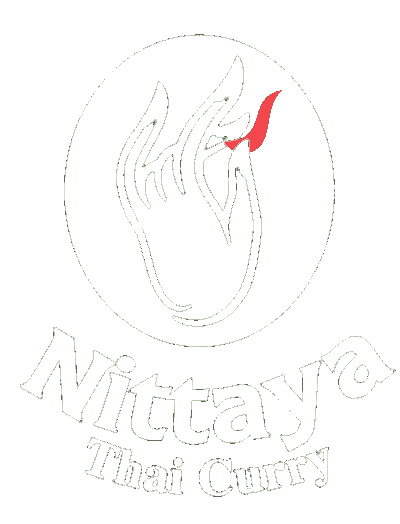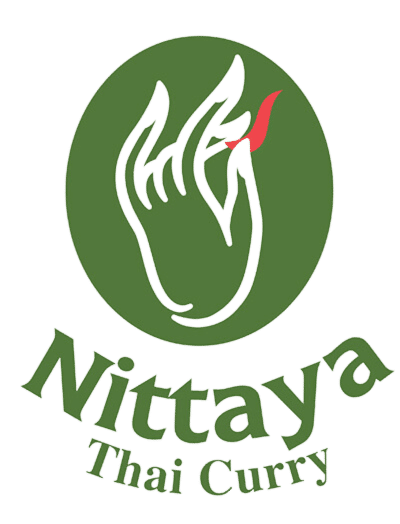What Is Galangal? How Is It Used In Thai Cooking?
Galangal, sometimes overshadowed by its more familiar relative ginger, is a fundamental part of Thai cooking. This incredible ingredient imparts a distinctive flavor and bright aroma to many traditional dishes.
Known as “kha” in Thai, this fragrant root gives Thai dishes a sharp, citrusy, and slightly peppery taste. This taste enhances the complexity of soups, curries, and stir-fries.
Galangal has a firm texture and vibrant flavor profile. This is what makes it such a versatile ingredient. It is capable of holding its own against the bold spices and herbs you commonly find in Thai cuisine.
Whether fresh, dried, or powdered, galangal’s unique qualities are essential in crafting the authentic taste of Thailand. It is an absolute must-have for any culinary enthusiast trying out Southeast Asian flavors.
Keep in mind that many of our curry pastes by Nittaya Thai Curry are already packed with the highest quality galangal and are ready to use. The quantities and ingredient ratios in our curry pastes are carefully measured to ensure the resulting recipe is perfectly balanced.
Our ingredients are sourced locally where possible, free from chemicals and pesticides, and of the highest quality.
Table of Contents
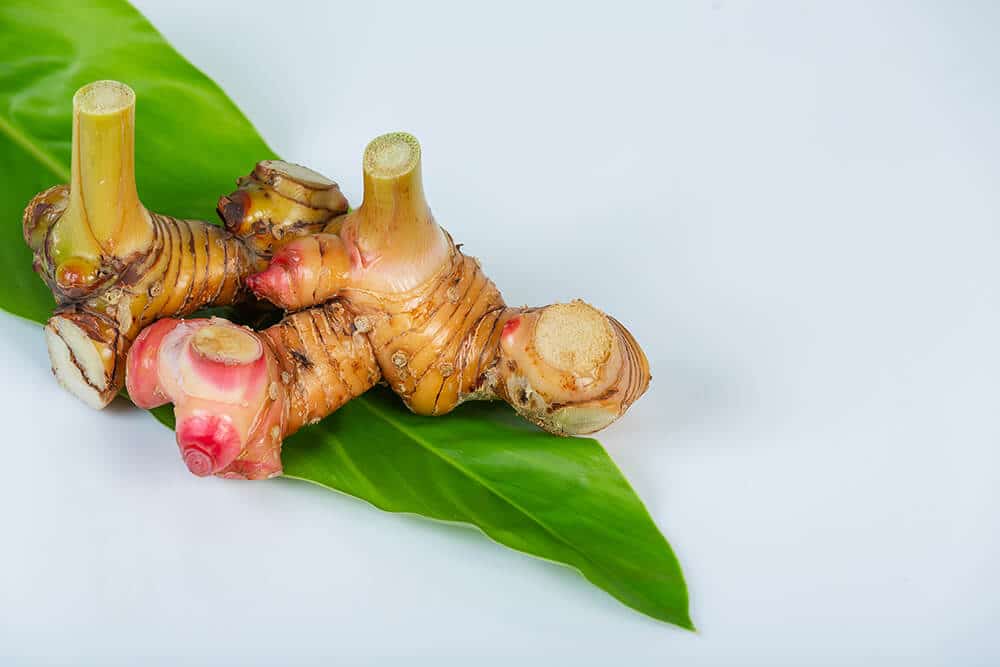
Health Benefits of Galangal
Galangal, a root related to ginger and turmeric, boasts many health benefits thanks to its rich array of antioxidants and anti-inflammatory properties.
It is mostly known for aiding digestive health by stimulating digestive enzymes. This then alleviates discomfort from indigestion and bloating.
Its antimicrobial properties help combat infections, while the high levels of antioxidants enhance immune function and protect against cellular damage.
Remarkably, galangal has been linked to improved blood circulation and reduced risks of certain chronic diseases. It is a valuable addition to a healthy diet!
How to Cook With Galangal
Cooking with galangal involves using it much like ginger, as it can be sliced, grated, or pounded to release its unique, pungent flavor.
When fresh, its firm, woody texture can be softened by slicing thinly or grating finely.
Dried or powdered galangal can also be used, but it’s essential to remember that the flavor is more concentrated, so adjust the quantity accordingly. For the best flavor, it’s a good idea to add galangal early in the cooking process to allow its aromatic properties to fully develop.
Typical Thai Dishes That Include Galangal
Galangal is a staple in many traditional Thai recipes, contributing to the distinctive flavors of the cuisine.
Galangal is a key ingredient in many Thai curries where it combines with other spices to form the aromatic curry paste that serves as the dish’s base.
It also appears in Tom yum goong, a hot and sour soup loaded with shrimp, where galangal’s sharpness balances the sourness of lime and the heat of chili.
Another classic is tom kha gai, a creamy coconut soup with chicken, where the fragrant blend of galangal, lemongrass, and kaffir lime leaves creates a complex and soothing broth.
Which Part is Used for Eating/Cooking?
In cooking, the rhizome or underground stem of the galangal plant is used, similar to ginger and turmeric.
This part is valued for its firm texture and potent, aromatic flavor. It is usually peeled and then sliced, grated, or pounded to release its distinctive taste and pungent aroma.
Both fresh and dried forms of the rhizome are used in different culinary applications, though the fresh form is preferred because of its vibrant flavor.
Finally, while galangal is perfectly edible, pieces of galangal in soups such as tom yum goong aren’t usually eaten, as they can be quite tough to chew.
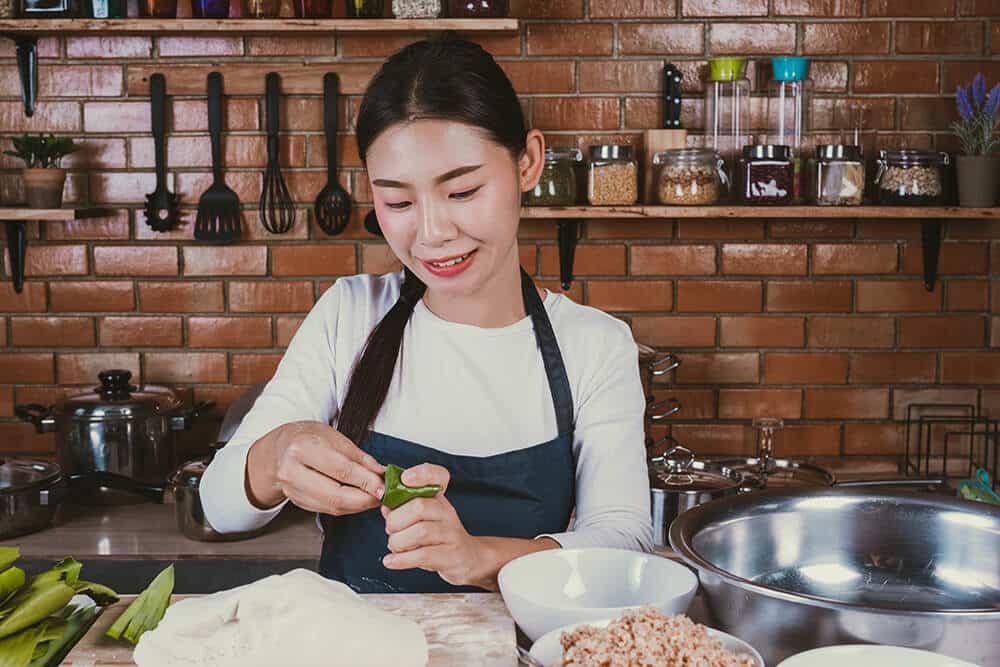
Ginger Vs Galangal: How Do They Differ?
Ginger and galangal, though related, have distinct differences in flavor, appearance, and the way they are used in the kitchen.
Ginger has a milder, warm, and slightly sweet taste with a fibrous texture, while galangal offers a sharper, citrusy, and more peppery flavor with a firmer, woody texture.
In terms of appearance, ginger is light brown with a knobby appearance, whereas galangal has a smoother, reddish-brown skin and pale flesh.
In cooking, ginger is widely used in both sweet and savory dishes across various cuisines, while galangal is predominantly featured in Southeast Asian recipes, particularly Thai and Indonesian dishes.
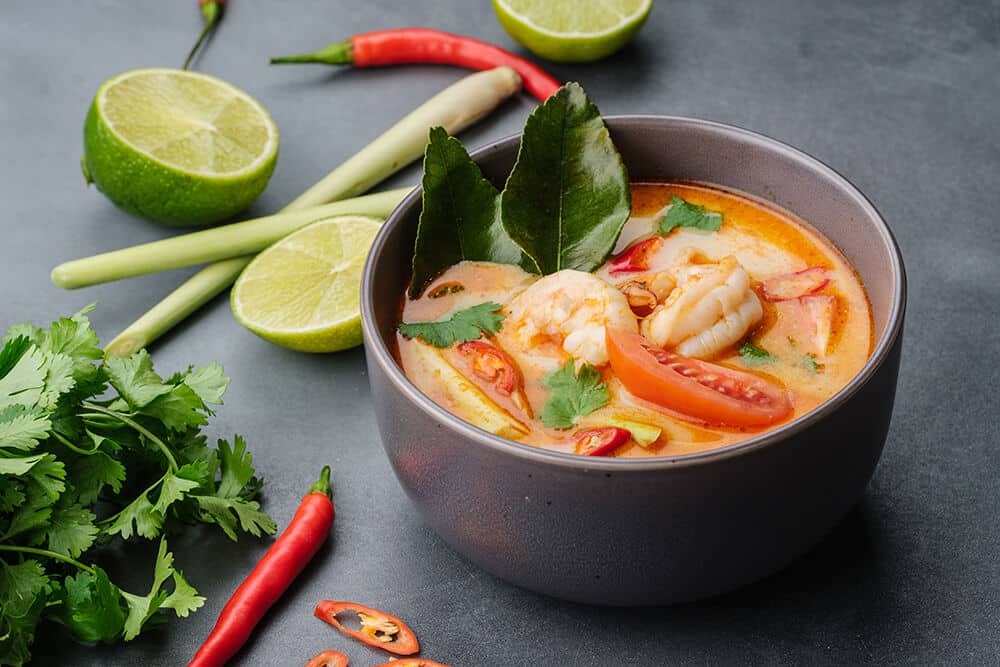
How to Choose Galangal
When choosing galangal at the store, look for firm, unblemished rhizomes with smooth, taut skin and a fresh, spicy smell. The flesh should be pale and moist, not dry or shriveled.
Avoid pieces that are soft, moldy, or have dark spots. These are likely old and potentially spoiled. If buying pre-packaged galangal, check the expiration date to ensure the piece is fresh.
Fresh galangal is preferable, but if unavailable, dried or powdered forms can be used as substitutes. Keep in mind that powdered and dried galangal will likely have a more concentrated flavor.
How to Store Galangal at Home
To store fresh galangal at home, wrap it in a paper towel to absorb moisture and then place it in a plastic bag or airtight container in the refrigerator. This method helps keep it fresh for up to two weeks.
For longer storage, you can freeze galangal: peel and slice it before placing the pieces in a freezer-safe bag or container.
Frozen galangal can last for several months and can be used straight from the freezer in cooked dishes.
Dried or powdered galangal should be stored in an airtight container in a cool, dark place, where it can retain its potency for several months.
Can you Grow Galangal at Home?
Yes, you can grow galangal at home, and it’s relatively straightforward. Having said that, it takes up to 12 months to grow fresh galangal. Consider our ready to use Thai curry pastes – these include the perfect amount of high quality galangal already, so there is no need to grow your own.
